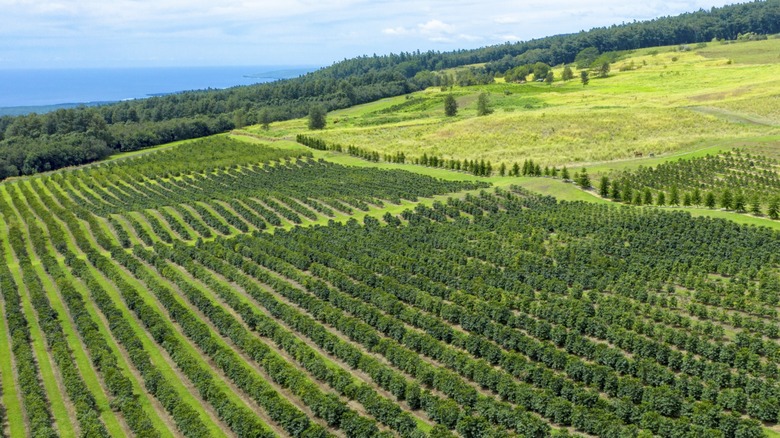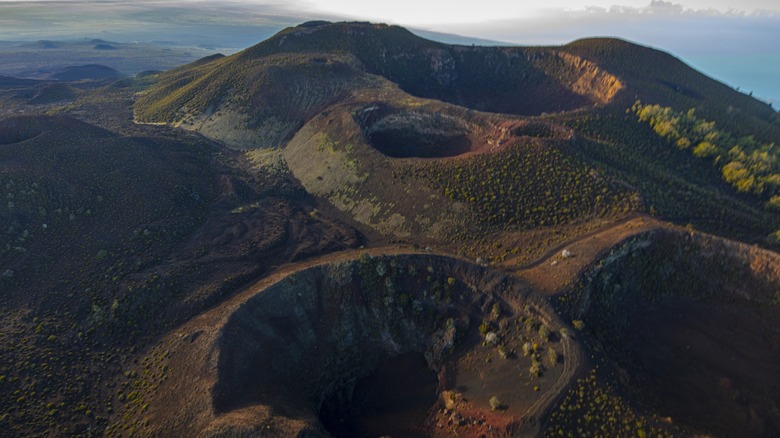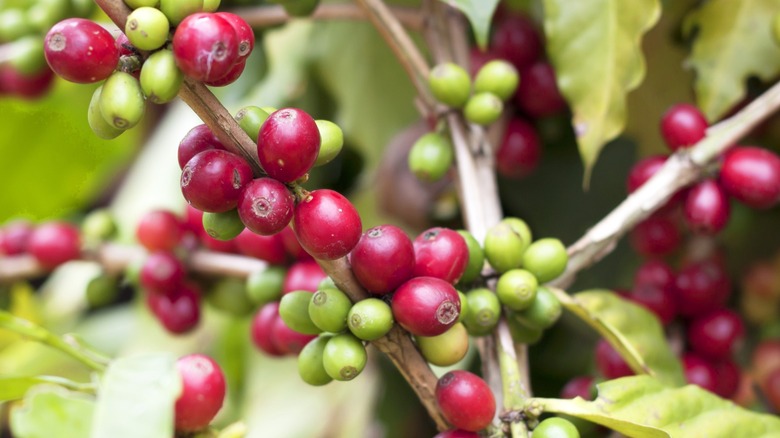Coffee Culture And History Blend On This Working Farm In The Heart Of Hawaiian Paradise
We may receive a commission on purchases made from links.
Tucked away on the western side of Hawaii's Big Island is the famed Kona Coast, where you can see stunning beaches and the historical Kaloko-Honokōhau National Park. This coast, teeming with wildlife and natural beauty, is particularly special. Here you'll find postcard-worthy shoreline, several beautiful national parks and hiking trails, and important cultural sites and monuments steeped in rich history.
Kona is also known for its excellent, world-famous coffee, which is grown on farms near the coastline on the slopes of the active volcanoes Mauna Loa and Hualalai. The coffee produced here has a unique flavor profile — nutty, full-bodied, and smooth — due to the rich volcanic soil in which it is grown. And the consistent rainfall in the area and moderate temperatures make for the perfect coffee-cultivating conditions.
One place that produces these high-quality beans is the Kona Coffee Living History Farm, located in Captain Cook in South Kona. This farm transports visitors back to the 1920s to experience life in the shoes of some of Kona's earliest coffee pioneers. It is situated on the historic grounds of the Uchida family, Japanese immigrants who came to the Big Island from Kumamoto and took over this land's coffee lease in 1913. During their 81 years on the farm, they built their family home (the Uchida Farm House that still remains) and developed the innovative coffee cultivation process that would transform the region. Upon visiting, you'll meet costumed actors (called "living history interpreters") who will authentically showcase different aspects of the farming process as it was done during this time period. You'll see traditional, well-preserved exhibits, including the "kuriba", a coffee mill from 1926, and the "hoshidana", a coffee-drying platform. A visit here will immerse you in the storied history of Kona's most famous and valuable crop.
Viator experiences that include the Kona Coffee Living History Farm
As of the time of writing, there are six Viator experiences that either stop in or pass over the Kona Coffee Living History Farm — mainly self-guided, multi-day driving tours and short helicopter tours. Before doing any of the driving tours, make sure to first download Shaka Guide, a clever app that'll make you feel like you have your own personal Hawaiian tour guide. For the most bang for your buck, try the Kona Big Kahuna GPS Driving Tour, which will take you from the North Kona coast to the south and back. There are 10 stops, and it is recommended to do this route, which starts and ends at Kaloko-Honokōhau National Historical Park, over two days. Some of the other stops include Big Island Bees, a family-operated honey farm, and the Lekeleke Burial Grounds and Kuamo'o Battlefield, where over 300 Hawaiian warriors gave up their lives in battle. The tour will cost you about $20, and through the app, you'll hear insightful stories about King Kamehameha and Captain Cook. You'll also learn about ancient Hawaiian culture, traditions, and rituals as you continue on your journey.
For an aerial view of the farm and Kona's coastline, a helicopter tour is the way to go. The Kona Coast Hualalai Volcano Helicopter Tour, starting at $515 per person, is an epic experience guaranteed to knock your socks off! For 60 minutes, you'll soar over the Kona coastline, viewing the magnificent Hualalai volcano and Ka'upulehu crater from above. You'll see the verdant green foliage of the Pu'u Wa'awa'a Forest Reserve and the vibrant blue waters of Kiholo and Anaehoomalu Bay. As you fly over the Kona Coffee Living History Farm, you can admire the many lush coffee plants dotting this colorful landscape.
Know before you go
As of the time of writing, the farm is only open on Tuesdays and Fridays from 10 a.m. to 2 p.m., with final entry at 1:15 p.m. To enter, it costs $20 for adults and $10 for students (ages 7-17), with lower rates for Hawaii residents. All children under 7 can enter for free. No reservations are required unless you are planning on visiting with a group of 20 or more. All tours are self-guided, so you can explore the grounds at your leisure. The proceeds from ticket sales go to supporting the Kona Historical Society, a non-profit that works to preserve and share the history of the Kona region.
Be aware that you are not able to buy coffee here, as it is not a commercial operation. But you definitely shouldn't leave the region without trying at least one cup of joe — and maybe buying a few bags of it to enjoy later!
It is highly recommended to spend a few days in this beautiful area — there certainly won't be a shortage of activities to keep you occupied. You can suntan on Hapuna Beach, stroll around the historic Kona town center, snorkel or kayak in Kealakekua Bay, and even go whale-watching. There are plenty of places to stay in the Kailua-Kona area at a variety of price points, including homey Polynesian-style apartments, five-star resorts, family-owned guesthouses, and condos with exquisite ocean views. For a modern yet luxurious retreat in nature, book accommodations in beautiful Kahuwai Bay in North Kona, about a 40-minute drive from the farm. You'll experience full relaxation in a remote environment if you stay under the thatched roofs of the restored and historic Kona Village.


